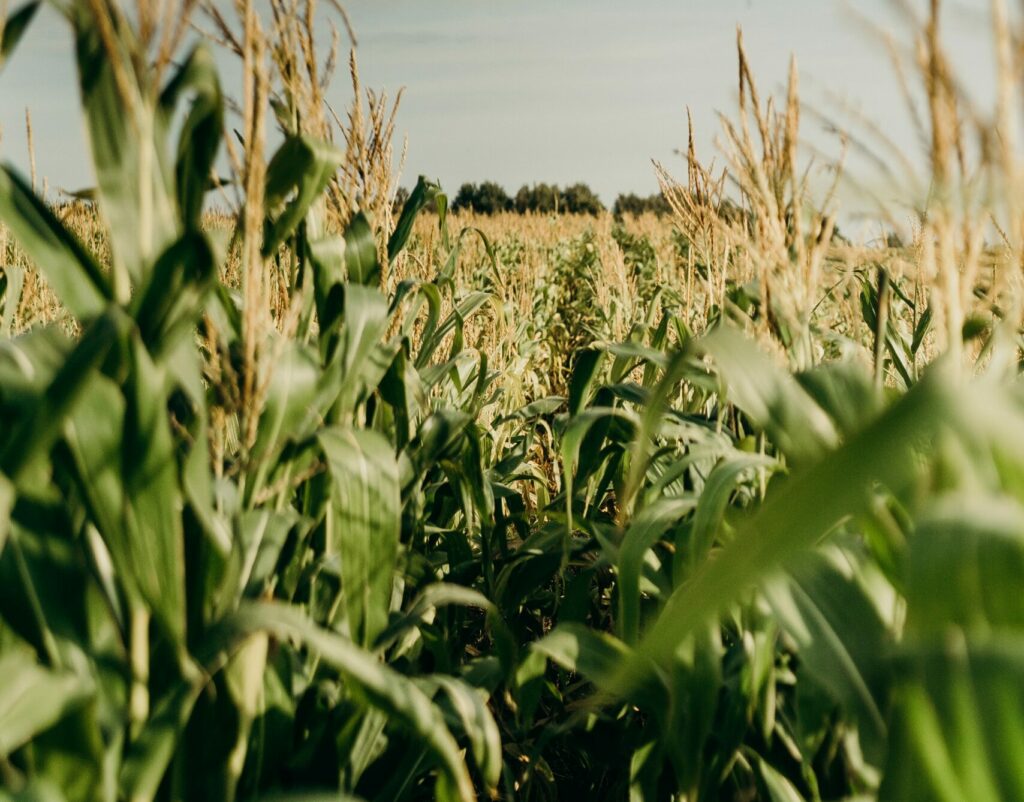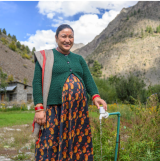Making Food Safer for both People and the Planet

The seemingly interminable relationship between molds and agricultural produce is a cause for concern among health professionals and farmers across the world. While not all molds are dangerous, some produce poisonous substances called mycotoxins that contaminate food crops. Among the mycotoxins that affect agriculture, and subsequently human and animals, aflatoxins are the biggest threat. As early as 1998 we knew that a shocking quarter of the world’s food crop contamination can be attributed to aflatoxins,(1) making it not only a food safety but a food loss problem that results in severe economic consequences for low- and middle-income countries (LMICs).
According to the World Bank,(2) African nations lose USD 670 million annually on account of aflatoxins. In a world grappling with decreasing yield due to climate change, the loss of food crops due to aflatoxins is a huge setback that also exacerbates global warming. Reducing food loss eases pressure on natural resources and decreases greenhouse gas emissions. Aflatoxins are also linked with stunting among children,(3,4) which is already a major malnutrition problem for LMICs.
As countries struggle to address inequities and challenges in food systems, on World Food Day 2022, we take a closer look at the threats posed by aflatoxins and the potential solutions.
What are aflatoxins?
Colorless, odorless and tasteless, aflatoxins are hard to spot, therefore difficult to identify and remove. They do not degrade at standard cooking temperatures and are only slightly soluble in water. Aspergillus, the mold species that produces aflatoxins, are found in soil, decaying vegetation, hay, grains, and food that has not been stored properly.
Aspergillus thrive in warm and humid storage conditions, and typically affect cereals and legumes such as maize, millets, groundnuts, sorghum and soybean. They enter the food chain through contaminated feed and grains, thus affecting both humans and animals. Aflatoxins are carcinogenic, suppress the immune system and damage to the liver caused by them can lead to serious health issues for humans. A recent study has concluded that chronic maternal aflatoxin exposure is associated with lower fetal growth over time.(4) In animals, aflatoxins impede growth and reproduction. This is particularly true of chickens and their egg-laying capacity. Animals that consume contaminated feed can also pass on aflatoxins to humans, especially through milk products.
Regular tests with the help of Romer lab kits – a lateral test device that can read quantitatively six different mycotoxins with four samples at a time within 10 minutes – allow us to accurately check the presence of aflatoxins. Ideally, this should be done routinely throughout the value chain whenever mold is visible on crops or not, especially in warehouses when moisture is observed to be increasing. Maize, peanuts, sorghum, millet and soybean harvested from drought-prone areas need special attention, as do commodities found to have been stored improperly.
Sight and Life Spotlight: Rwanda
A considerable amount of work in the management of aflatoxins has been done in Rwanda, where between 40% and 60% of maize, peanuts and dairy are contaminated. The Rwandan government, keen to find a solution to the infestation, has launched several initiatives, including mandatory aflatoxins testing introduced in 2021, a step we at Sight and Life hugely welcome.
However, a lot more needs to be done. For instance, quite alarmingly, an infant cereal assessed on the market in 2020 exceeded 60 times the aflatoxins cut-off standard set by Rwanda Standards Board.(5) This is largely because the country’s moist climate results in farmers struggling to dry their crops, creating ideal conditions for the contaminant to thrive.
Sight and Life solutions
The only scientific way of determining the level of aflatoxins before sale or purchase of feed and foods is by analytical testing and not by mere observation. Moisture control is the other weapon in the battle against aflatoxins. The use of moisture meters will help farmers and aggregators track accurately and keep records of moisture content to establish a trend.
Drying of crops is a crucial area that deserves attention. Mechanized agitators and fans must be used to circulate hot air that will reduce moisture to less than 13%. At the packaging stage, the use of the hermetic packaging materials such as the Purdue Improved Crop Storage bag can mitigate grain contamination during prolonged storage. The shelf life of the produce can be improved if farmers find storage bins and warehouses compliant with food quality and safety standards.
Our current on-ground efforts include the scaling up of aflatoxins diagnostics in Rwanda, in partnership with the Food and Drugs Authority (FDA) and Rwanda Inspectorate Competition and Consumer Protection Authority (RICA). By the end of 2024, as part of the Product Innovations in Nutrition project, Sight and Life in partnership with a regulatory body in Rwanda, seeks to implement end-to-end solutions, which include aflatoxin and moisture diagnostic kits and the climate-smart solar hybrid drying solutions for maize. This combination of testing for moisture and drying solutions will help the government provide uncontaminated maize to around 180,000 people. When implemented well, these solutions can lead to a 40% reduction in food loss and 70% increase in income among select farmers. This is a game-changing innovation. Other sustainability benefits include healthy animals, leading to efficient farms producing far fewer emissions – with that, coupled with reduced food loss, we contribute to making our planet a better place.
On World Food Day, we pledge to continue to do our bit for the better health of both the people and the planet.
References
- Food, nutrition and agriculture 23 Minimizing risks posed by mycotoxins utilizing the HACCP concept (fao.org) (accessed 6 October 2022)
- Wilsona, John S, Otsuki, Tsunehiro. Winners and Losers in a Fragmented System, 2001
- Gleason et al., 2016; Kumar, Mahato, Kamle, Mohanta, & Kang, 2017; Magoha et al., 2016; Wu, Narrod, Tiongco, & Liu, 2011
- Kokeb Tesfamariam et al. Chronic aflatoxin exposure during pregnancy is associated with lower fetal growth trajectories; September 2022; https://academic.oup.com/ajcn/advance-article-abstract/doi/10.1093/ajcn/nqac280/6731769 (accessed 6 October 2022)
- Silke Grosshagauer et al. Inadequacy of nutrients and contaminants found in porridge-type complementary foods in Rwanda; June 2019. https://onlinelibrary.wiley.com/doi/full/10.1111/mcn.12856 (accessed 10 October 2022)
Read next
Discover more
News & announcements
Find out what is new at Sight and Life
Multimedia
Explore our videos, podcasts, and infographics





